21 Best Sites in Kamakura
Explore the Best Sites in Kamakura, a city rich in history, culture, and natural beauty. Located just south of Tokyo, Kamakura is a popular destination known for its stunning temples, serene gardens, and magnificent coastal views. With various attractions to offer, Kamakura is a captivating place that will leave visitors in awe of its historical significance and scenic landscapes. Here is our compilation of the 21 best things to do in Kamakura.
Great Buddha of Kamakura
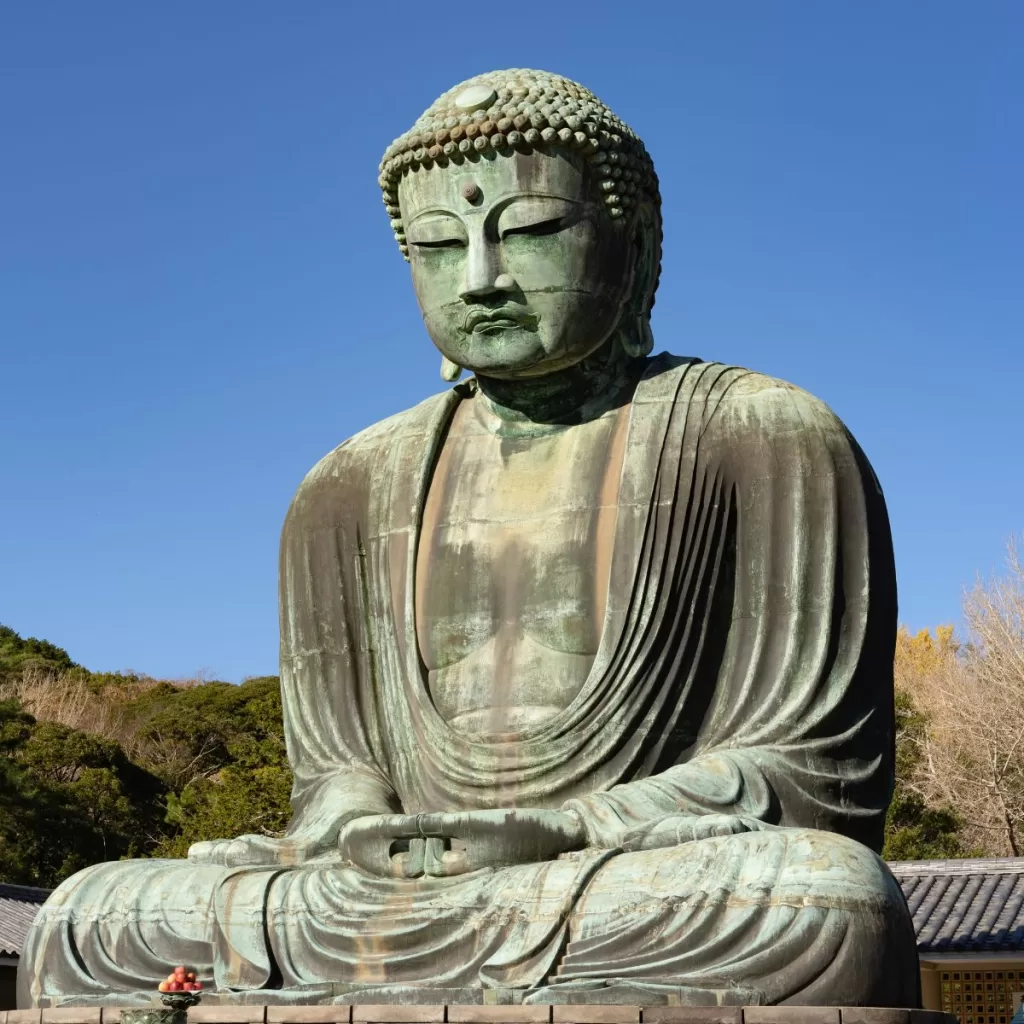
The Great Buddha of Kamakura, also known as Daibutsu, is one of Japan’s largest bronze statues of Buddha. At 11.4 meters high, it is an iconic landmark and one of the most impressive attractions in Kamakura. The intricate details carved into the Buddha are remarkable.
The Great Buddha is a prominent symbol of Buddhist art and culture, attracting visitors from around Kamakura and beyond. It is one of the best places to delve into the city’s rich historical and religious heritage.
The Great Buddha of Kamakura is one of the best places to visit in Kamakura, providing a captivating glimpse into the city’s rich history and prominent Buddhist heritage.
Tsurugaoka Hachiman Shrine
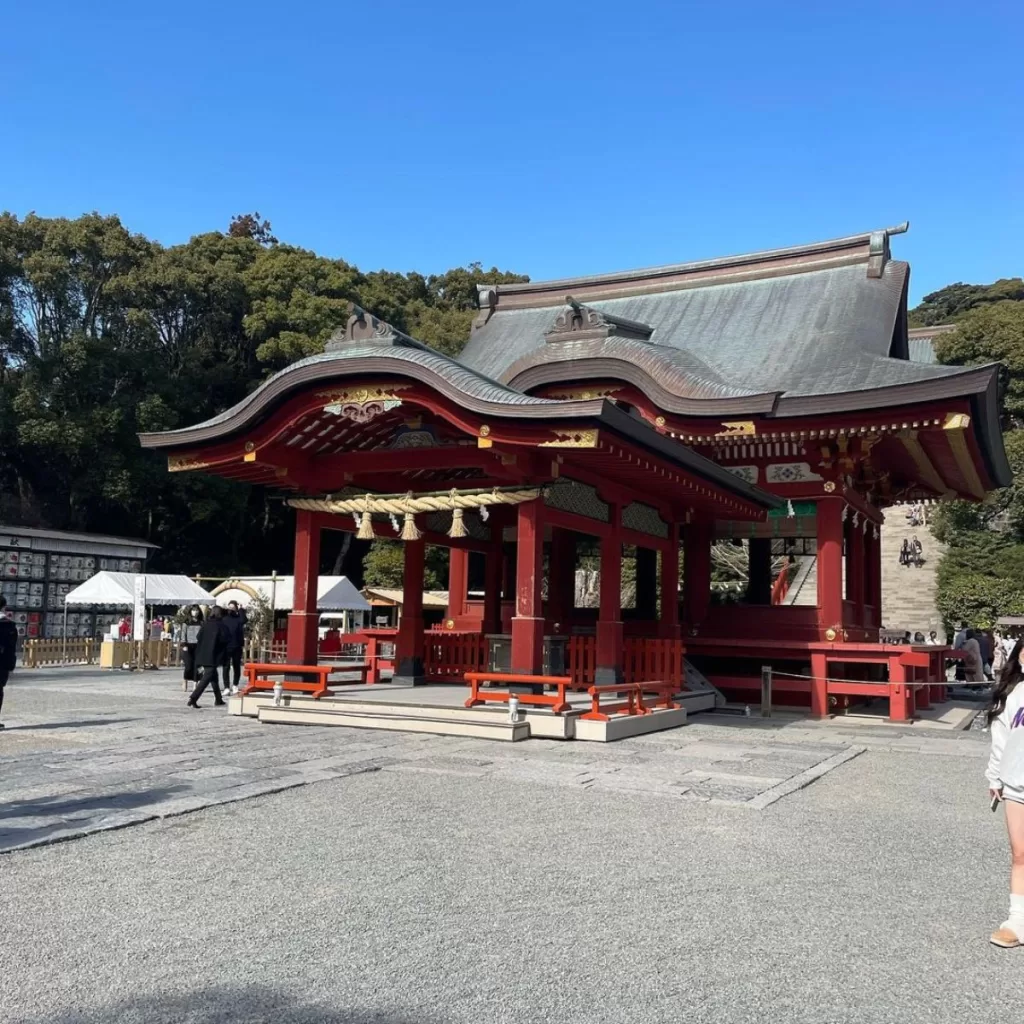
Tsurugaoka Hachiman Shrine is one of the most significant and popular tourist attractions in Kamakura, making it one of the must-visit places in Japan.
This shrine, the most important one in Kamakura, was built in 1063 to enshrine the Hachiman tutelary god of war. It has spectacular vermilion-colored buildings and a lively energy. Don’t miss witnessing the traditional weddings that regularly take place here.
As one of the most popular places in Japan, Tsurugaoka Hachiman Shrine offers a cultural and spiritual experience that immerses visitors in the traditions and legends of Kamakura. Walk along the shrine’s picturesque main approach, known as Wakamiya Oji, which is lined with cherry trees and leads to the main hall.
Whether strolling along the main approach, attending ceremonies, or exploring the shrine complex, be sure to visit this shrine in Kamakura,
Hasedera Temple
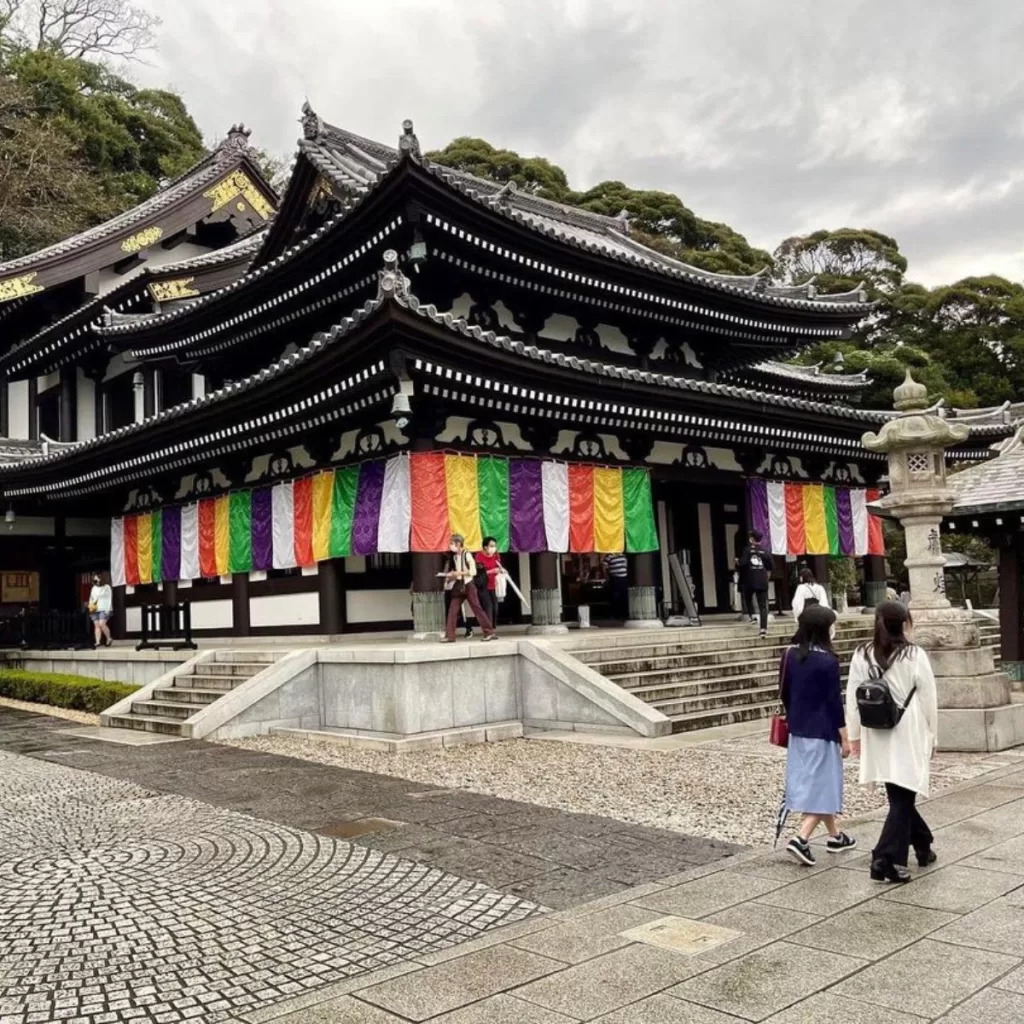
Hasedera Temple is a renowned Buddhist temple in Kamakura and one of the top tourist attractions in the city, making it a popular place to visit in Japan. Nestled amidst lush greenery and commanding stunning views of the surrounding area, Hasedera Temple is a serene and spiritual haven that offers a memorable experience to visitors.
It is most famous for its statue of Kannon, the goddess of mercy, located underground. The intricately carved details, serene expression, and compassionate aura of the Kannon statue captivate the hearts of visitors, leaving a lasting impression. The sacred atmosphere inside the grove with hundreds of small statues makes this a top Kamakura site.
In addition to the magnificent statue, Hasedera Temple is known for its beautifully landscaped gardens that change with the seasons. From cherry blossoms in spring to vibrant foliage in autumn, the gardens provide a breathtaking backdrop for a peaceful stroll and contemplation. The garden also features a peaceful pond adorned with lotus flowers, adding to the overall tranquility of the temple grounds.
Kotoku-in Temple
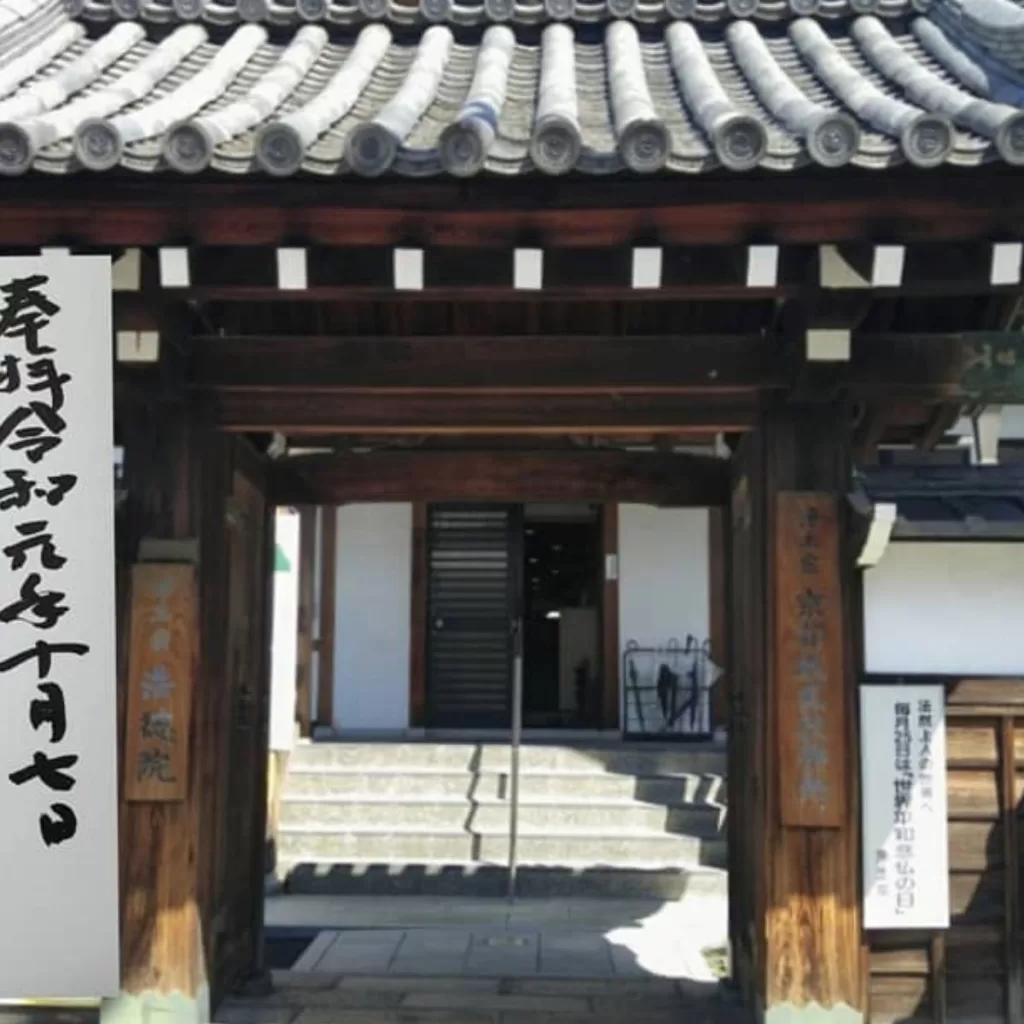
Kotoku-in Temple is one of the prominent Kamakura tourist attractions that is a must-see when visiting Kamakura, Japan. What makes Kotoku-in Temple particularly famous is its iconic Great Buddha (Daibutsu) statue. This towering bronze statue stands at approximately 13.35 meters (44 feet) tall, making it one of the largest outdoor Buddha statues in Japan. The serene expression on the Great Buddha’s face and its historical significance make it an awe-inspiring sight for visitors from around the world.
This renowned Zen temple contains six National Treasures including sculptures and Buddhist artifacts. A highlight is gazing upon its exquisite dry landscape rock garden considered one of Japan’s best. Peace and tranquility abound in its beautiful surroundings.
Visiting Kotoku-in Temple and witnessing the Great Buddha is one of the top things to see in Kamakura.
Engaku-ji Temple
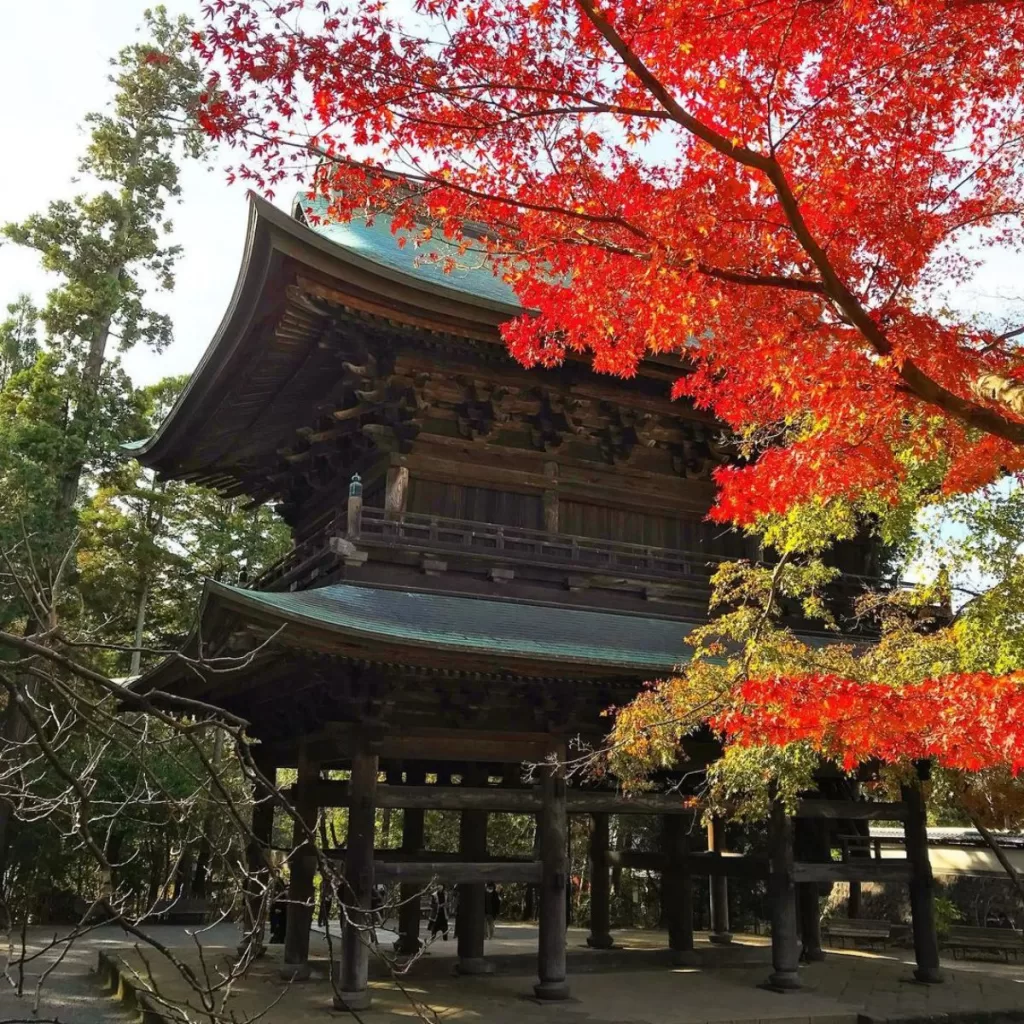
Engaku-ji Temple is one of the most significant and renowned Zen Buddhist temples in Kamakura, Japan. As one of the five most important zen temples in Japan, Engaku-ji has incredible cultural significance. Founded in 1282, it houses national treasures like sutra copies and bells. Don’t miss the main hall and winding paths through its subdued gardens.
Kamakura has plenty of attractions, and Engaku-ji Temple stands out as a must-visit destination for its cultural and spiritual importance. The temple boasts traditional Japanese temple buildings, including the Main Hall, Shariden (reliquary hall), and Sanmon Gate (main gate). These structures showcase the exquisite craftsmanship and attention to detail prevalent during the Kamakura period.
Visitors can appreciate the elegant simplicity and harmonious design of these historical buildings, offering a glimpse into the traditional architectural style of the time.
Kencho-ji Temple
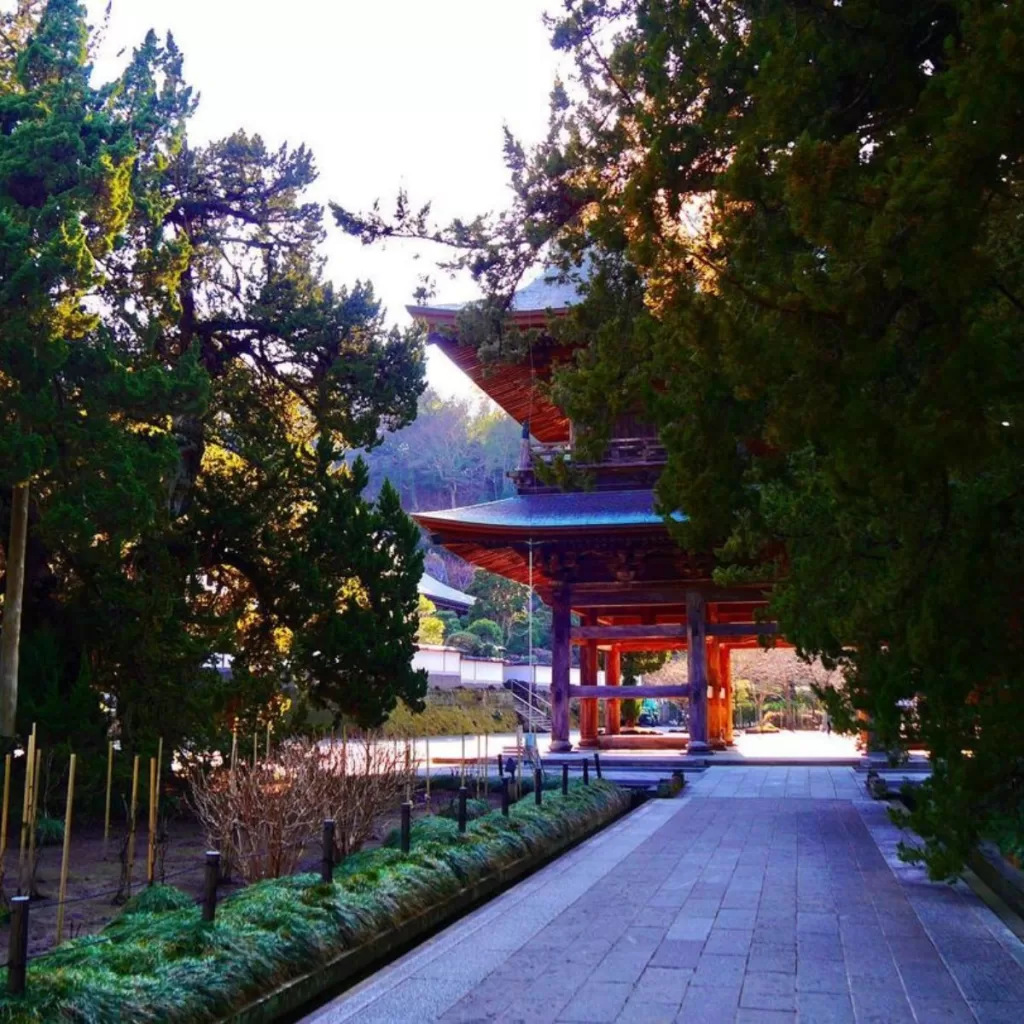
Kencho-ji Temple is an iconic Zen Buddhist temple located in the historic city of Kamakura. Kencho-ji has a welcomed serenity being situated in a forested valley. It founded the Rinzai sect of Zen Buddhism and has stood as one of Kamakura’s most prestigious temples since the 13th century. Take a meditative stroll past trimmed bonsai trees and stone lanterns.
One of the notable highlights of Kencho-ji Temple is its grand Sanmon Gate, which stands as one of the largest wooden temple gates in Japan. This majestic gate serves as the main entrance to the temple and is an architectural masterpiece that showcases the craftsmanship of the Kamakura period.
Stepping through the gate, visitors are greeted with a sense of reverence and awe, setting the tone for the spiritual journey within the temple.
Hokoku-ji Temple
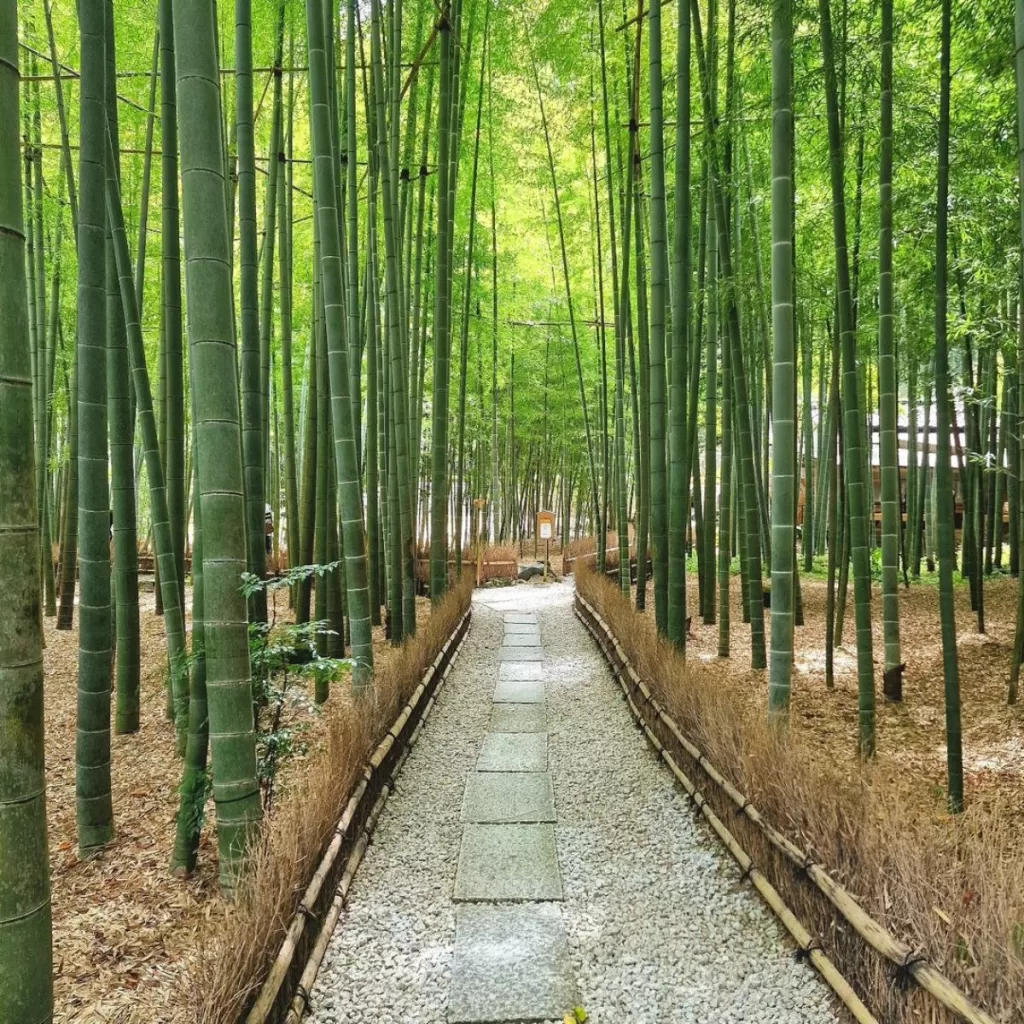
Hokoku-ji Temple, also known as the Bamboo Temple, is a hidden gem and a must-visit destination in Kamakura. This serene Zen temple is renowned for its beautiful bamboo grove that offers a peaceful and meditative atmosphere. Hokoku-ji Temple serves as a tranquil retreat for visitors and acts as a guide to Kamakura’s natural beauty and spiritual heritage.
This small but mesmerizing temple is famous for its elegant gardens and moss covered Buddha statue. Situated under a large gingko tree, the light filtering through moss clad trees envelops visitors in tranquility. A perfect escape from the bustle of Kamakura Station.
Visitors can sit and contemplate in the Zen garden, allowing the serene ambiance to guide them towards a state of inner stillness and mindfulness.
Zeniarai Benten Shrine
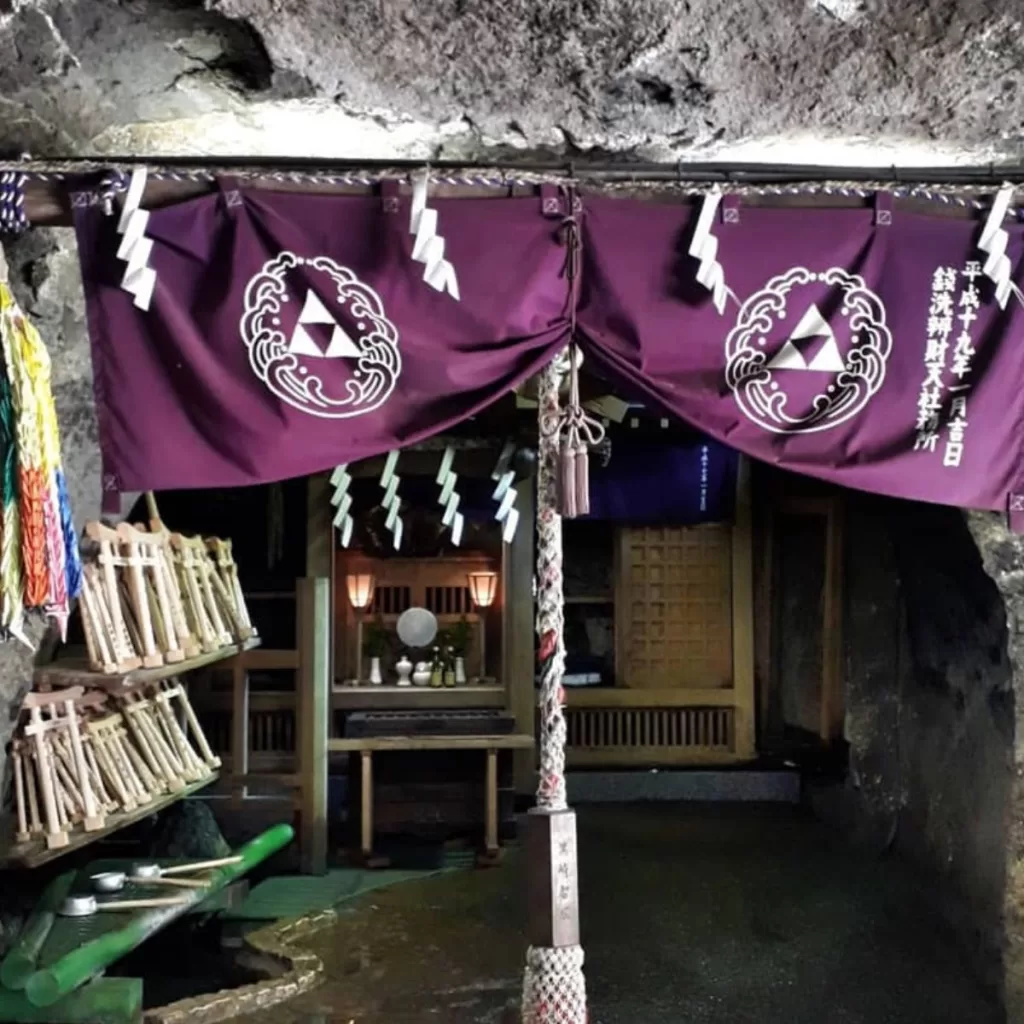
Zeniarai Benten Shrine is a unique and revered religious site that draws visitors seeking blessings and good fortune during their day in Kamakura.
This intriguing shrine lies within a scenic river valley. One of the notable features of Zeniarai Benten Shrine is its ritual of “zeniarai,” which translates to “coin washing.” Visitors have the opportunity to wash their coins or bills in the shrine’s spring, believed to multiply the value of the money.
The act of cleansing the money is seen as a way to purify one’s financial affairs and attract prosperity. It is a popular ritual that engages visitors in a unique cultural experience and a symbol of their hopes for abundance and success.
Itsuki Garden
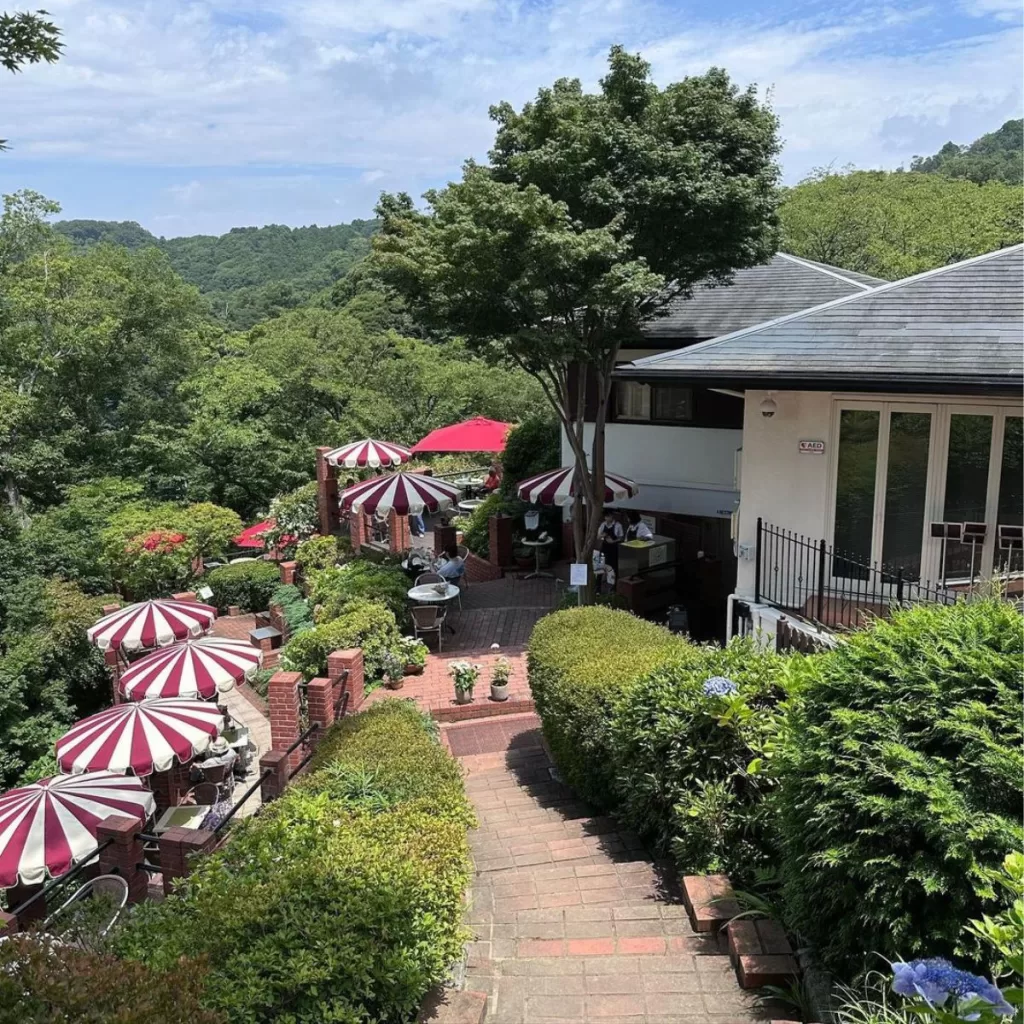
Itsuki Garden is a captivating and enchanting botanical garden located in Kamakura. This hidden gem offers a peaceful and serene escape from the bustling city, showcasing a diverse range of plant species and meticulously designed landscapes.
One of the key highlights of Itsuki Garden is its beautiful and well-maintained gardens. Visitors can explore various themed areas, including a Japanese garden, rose garden, and pond garden. Each section is thoughtfully curated, featuring an abundance of vibrant flowers, lush greenery, and intricate stone pathways.
The garden’s picturesque setting provides a perfect backdrop for relaxation, photography, or simply enjoying a leisurely walk.
Yuigahama Beach
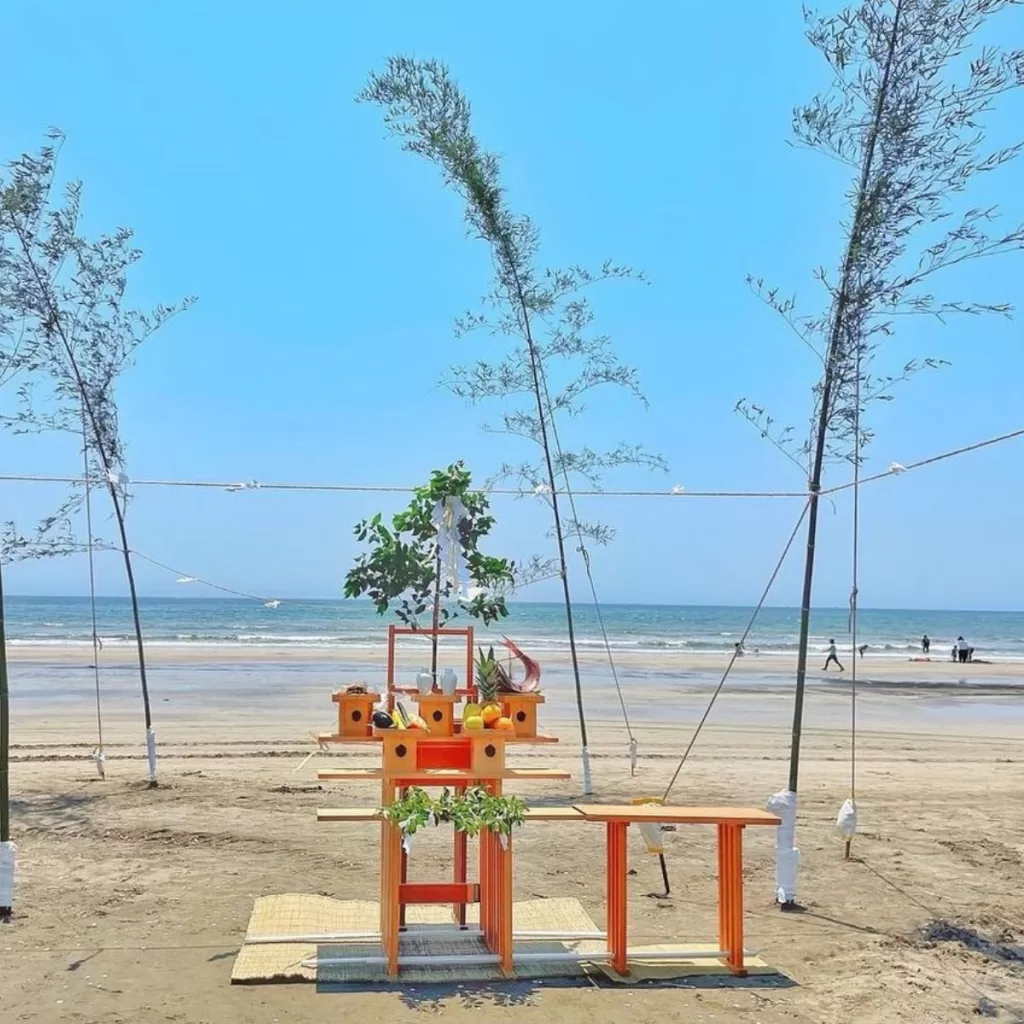
After exploring temples and shrines, relax at Yuigahama beach. It is one of Japan’s most beautiful beaches with fine white sand and views of the ocean. Many locals come to swim, fish or simply relax and enjoy seaside views.
Yuigahama Beach is a popular destination and a picturesque Kamakura beach that attracts locals and tourists alike. With its pristine shoreline, stunning views, and a wide range of activities, Yuigahama Beach offers a perfect escape from the city and a refreshing experience for beach enthusiasts.
Visitors can bask in the sun, take leisurely strolls along the shore, or simply unwind while listening to the soothing sound of crashing waves.
Kita-Kamakura Station Area
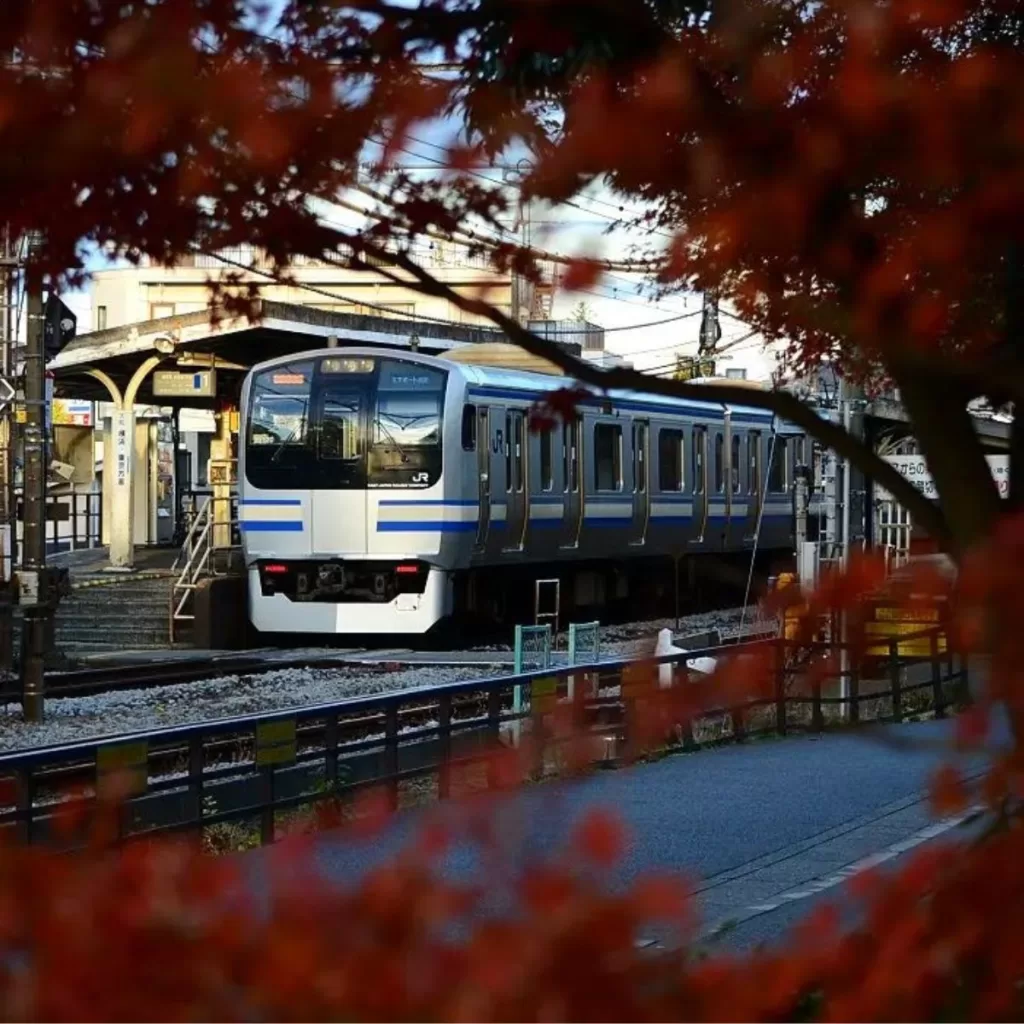
Kita-Kamakura Station Area is a vibrant and captivating part of Kamakura that truly showcases why Kamakura is great. As the gateway to many historical and cultural sites, Kita-Kamakura Station Area offers a perfect starting point for exploring the wonders of the city.
The areas around Kita-Kamakura and Engakuji Stations contain numerous hidden temples. Highlights include Jomyoji, a small temple nestled under a bamboo grove with a secret garden out back.
In addition to the temples, Kita-Kamakura Station Area offers charming streets lined with cafes, shops, and galleries. This bustling neighborhood provides a perfect blend of modern amenities and traditional charm. Whether you want to savor a cup of coffee in a quaint cafe or browse through unique art pieces, the Kita-Kamakura Station Area has something for everyone.
Genjiyama Park
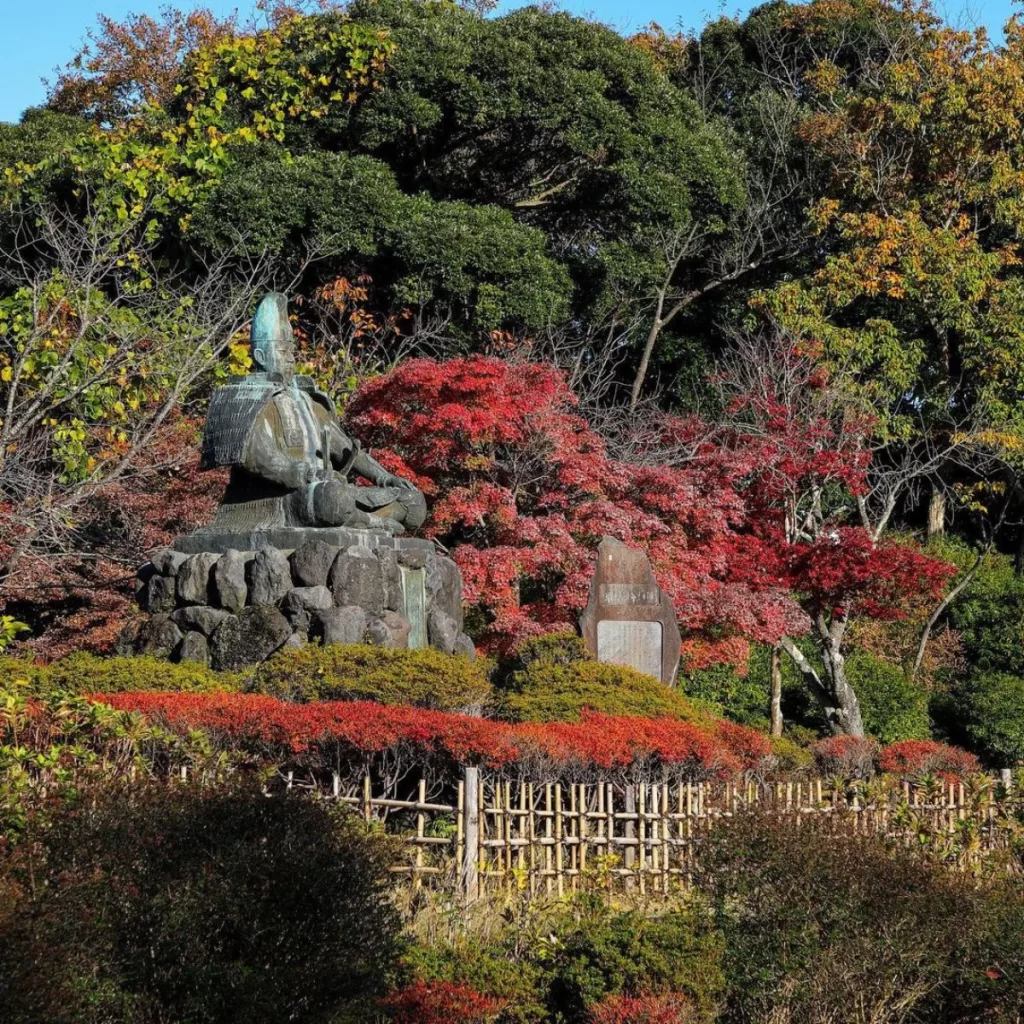
Genjiyama Park is one of the must-visit attractions in Kamakura. Situated on a gentle slope, this park offers breathtaking panoramic views of the city and the surrounding natural beauty. From the top of Genjiyama Park, visitors can witness the grandeur of Kamakura’s landscape, including its historic landmarks, lush greenery, and sparkling ocean.
Apart from its picturesque views, Genjiyama Park is also significant for its historical importance. The park is named after the renowned Genji clan, an ancient noble family who ruled during the Heian period. In addition, visitors can explore various pathways and hiking trails within the park, immersing themselves in nature while discovering the rich heritage of Kamakura.
Another highlight of Genjiyama Park is the Genjiyama Cultural Hall, which hosts various cultural events and exhibitions. Visitors can engage in workshops, attend performances, or explore the displays that showcase the local art and culture of Kamakura. The Cultural Hall adds an extra layer of charm and cultural immersion to the park, enhancing the overall experience of visiting Genjiyama Park.
Dankazura Path
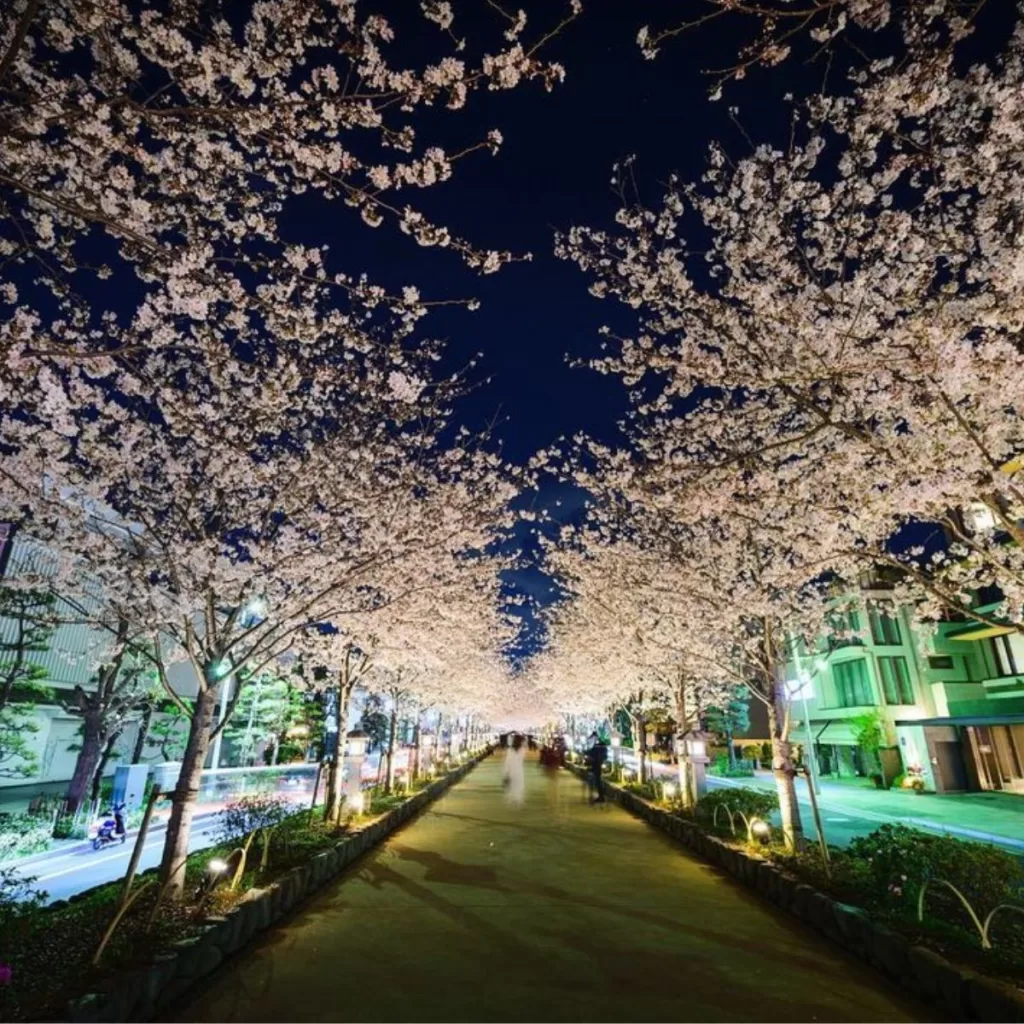
The Dankazura Path is a historic and iconic Kamakura stone pathway stretching from the city’s main entrance to the renowned Tsurugaoka Hachimangu Shrine. This 500-meter-long path holds significant cultural and symbolic importance, making it a must-visit attraction for visitors exploring Kamakura.
One of the key highlights of the Dankazura Path is its historical significance. The path was originally built during the Edo period and served as a ceremonial avenue for processions leading to the Tsurugaoka Hachimangu Shrine. Walking along this path allows visitors to step back in time and imagine the vibrant historical events that once took place in Kamakura.
The aesthetic appeal of the Dankazura Path is also noteworthy. The path is lined with over 200 cherry trees, which burst into a magnificent display of pink blossoms during the spring season. This creates a breathtaking and picturesque atmosphere, drawing in both locals and tourists alike to experience the beauty of Kamakura’s cherry blossoms.
Komyo-ji Temple
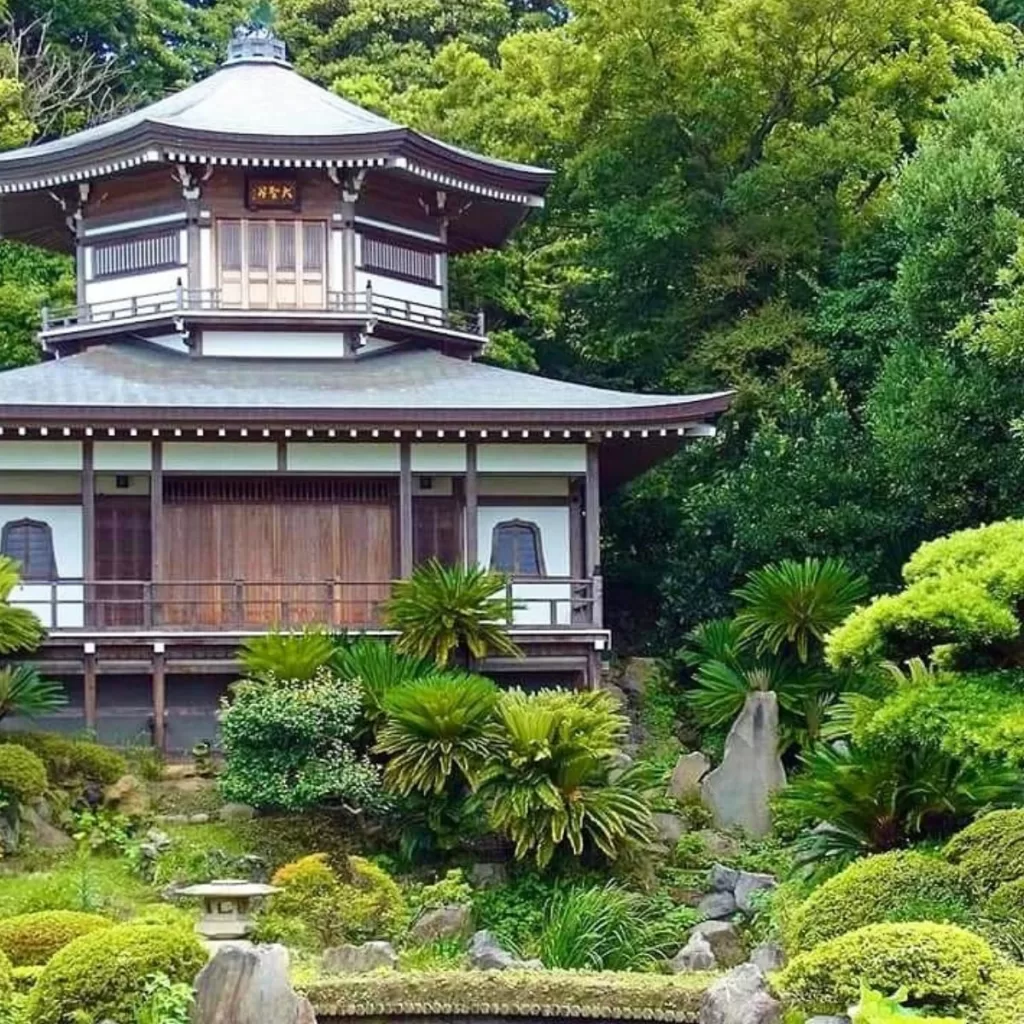
Komyo-ji Temple is a serene and historically significant Buddhist temple located in Kamakura. It is renowned for its tranquil atmosphere, beautiful gardens, and its connection to the renowned Zen master, Dogen Zenji.
One of the key highlights of Komyo-ji Temple is its stunning garden, which is meticulously designed and well-maintained.
Visitors can stroll through the peaceful pathways, enjoying the beauty of the traditional Japanese landscape. The garden features lush greenery, serene ponds, and carefully placed stones and lanterns, creating a harmonious and tranquil setting that is perfect for meditation and contemplation.
Sugimoto-dera Temple
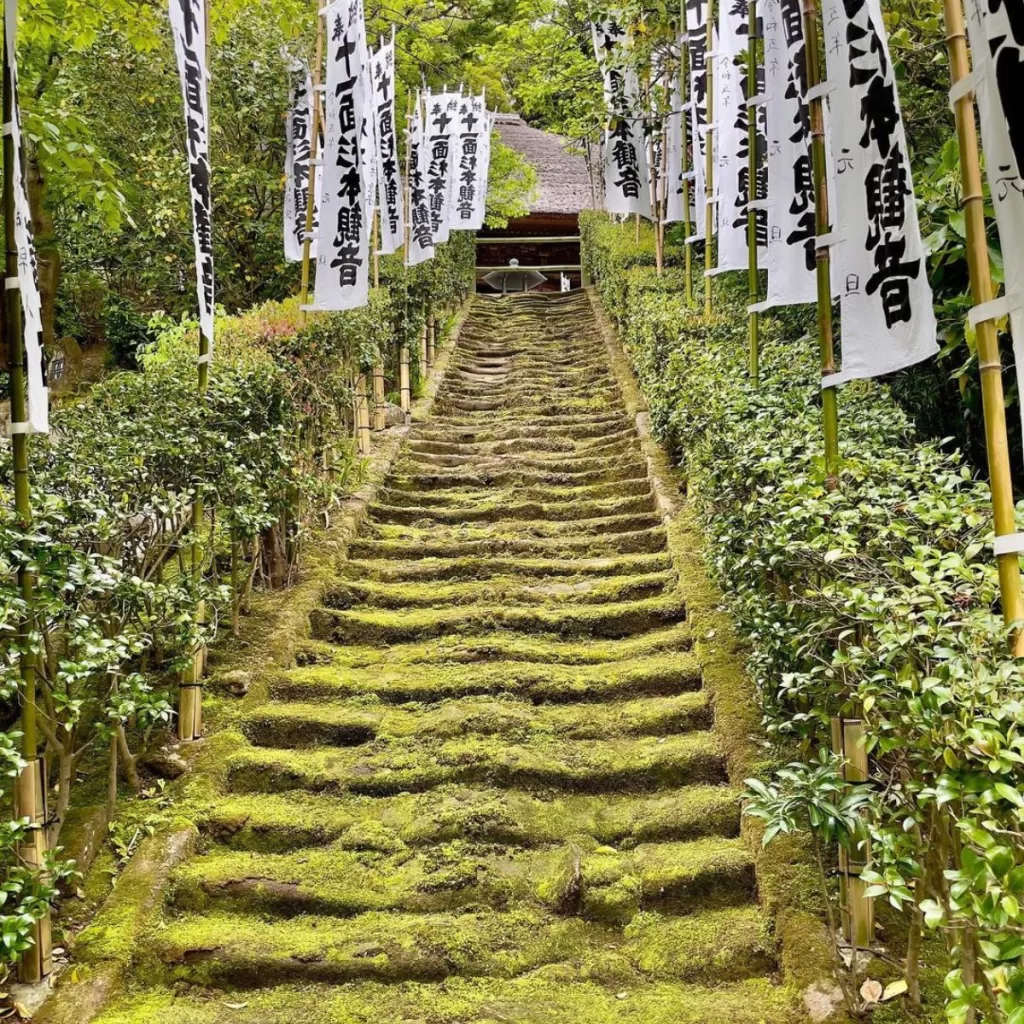
Hidden in a bamboo grove near Hayama Mountain trails, this serene temple has stood since the 700s. Look for its small scale buildings clinging to the mountainside surrounded by verdant greenery.
Kamakura is also famous for its numerous temples, and Sugimoto-dera Temple stands out with its unique charm. The temple dates back to the 9th century and features stunning architecture and beautifully maintained gardens.
Visitors can explore the temple grounds, admire the intricate details of the buildings, and take in the tranquility of the surroundings.
Hibiya Kadan Ofuna Flower Center
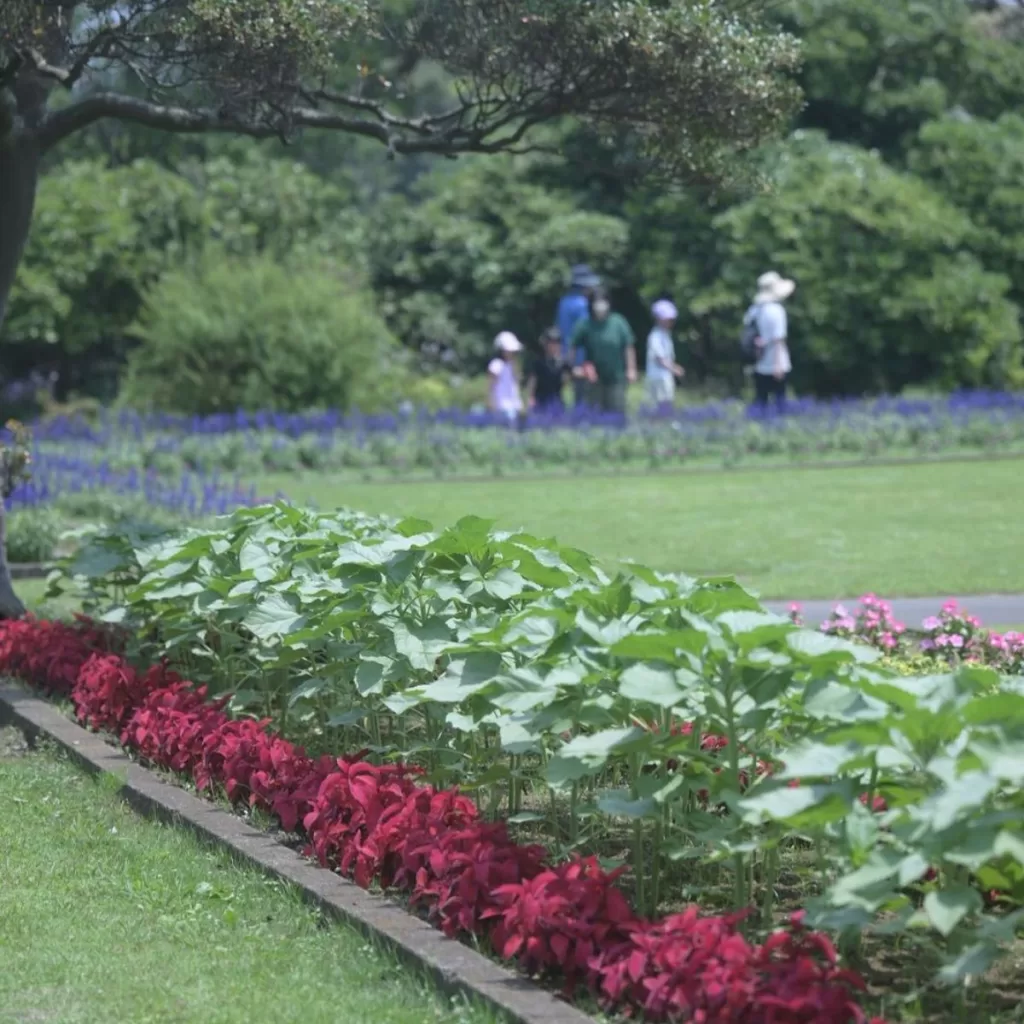
Hibiya Kadan Ofuna Flower Center is a delightful destination for flower enthusiasts in Kamakura. This flower center is known for its vast selection of beautiful blooms, gardening supplies, and expert advice on floral arrangements.
One of the key highlights of Hibiya Kadan Ofuna Flower Center is its extensive variety of flowers. The center showcases a wide range of floral species from vibrant roses to delicate orchids and seasonal blooms.
Visitors can explore the colorful displays, select their favorite flowers, and even seek guidance on proper care and nurturing from the knowledgeable staff.
Inamuragasaki Beach
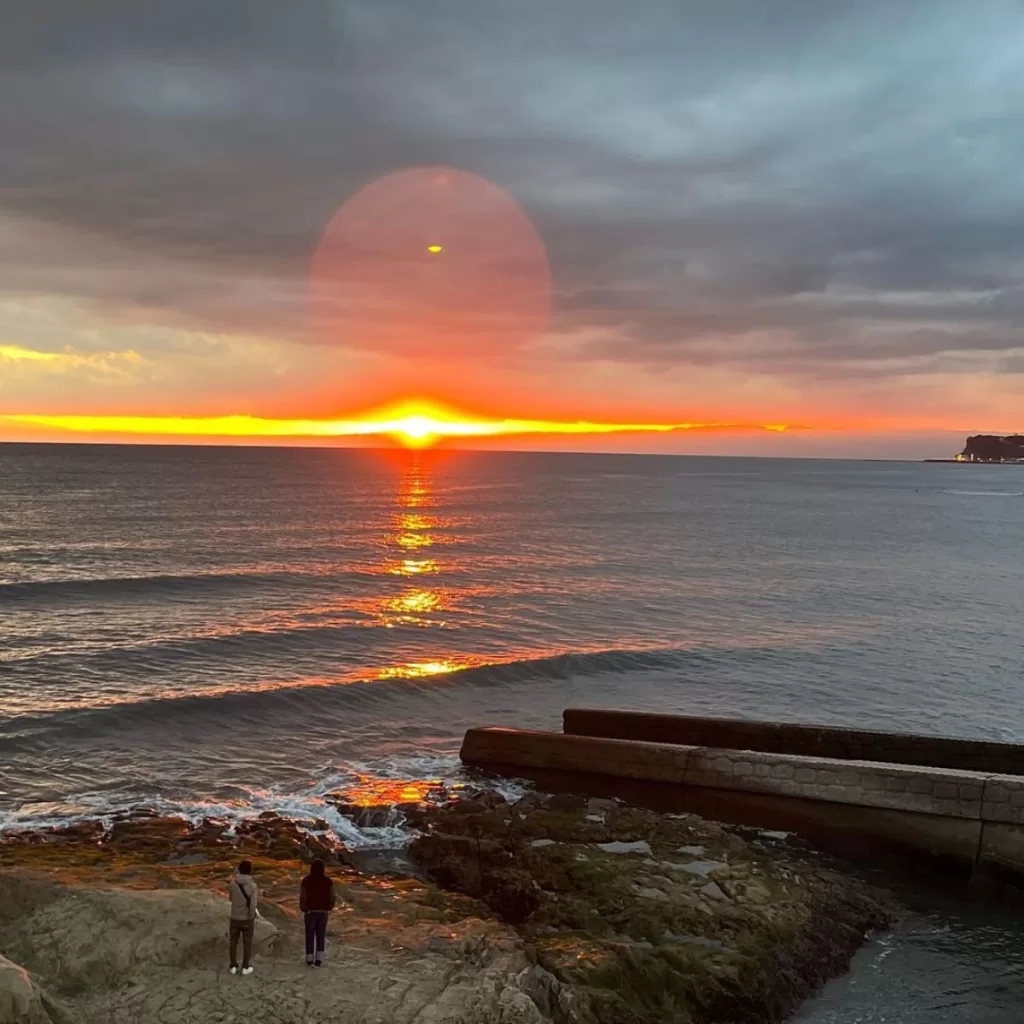
Inamuragasaki Beach is a charming coastal destination located in Kamakura, known for its natural beauty and relaxing atmosphere. With its picturesque views and pristine shores, it is a popular spot for locals and tourists alike to unwind and enjoy the seaside.
One of the notable features of Inamuragasaki Beach is its stunning backdrop of Enoshima Island and Mount Fuji. The beach offers breathtaking panoramic views of these iconic landmarks, creating a truly mesmerizing setting for beachgoers.
Visitors can soak up the sun, take leisurely walks along the shore, or simply sit back and admire the scenic beauty that surrounds them.
Kamakura Chuo Park

Kamakura Chuo Park is a scenic and expansive park located in the heart of Kamakura. This park is a beloved destination for locals and tourists alike, offering a wide range of attractions and recreational activities.
One of the key highlights of Kamakura Chuo Park is its stunning cherry blossom trees. During the spring season, the park transforms into a magical wonderland with vibrant pink blossoms adorning its grounds.
Visitors can enjoy leisurely strolls or have picnics under the cherry trees, immersing themselves in the beauty of the blooming flowers.
Kamakura Museum
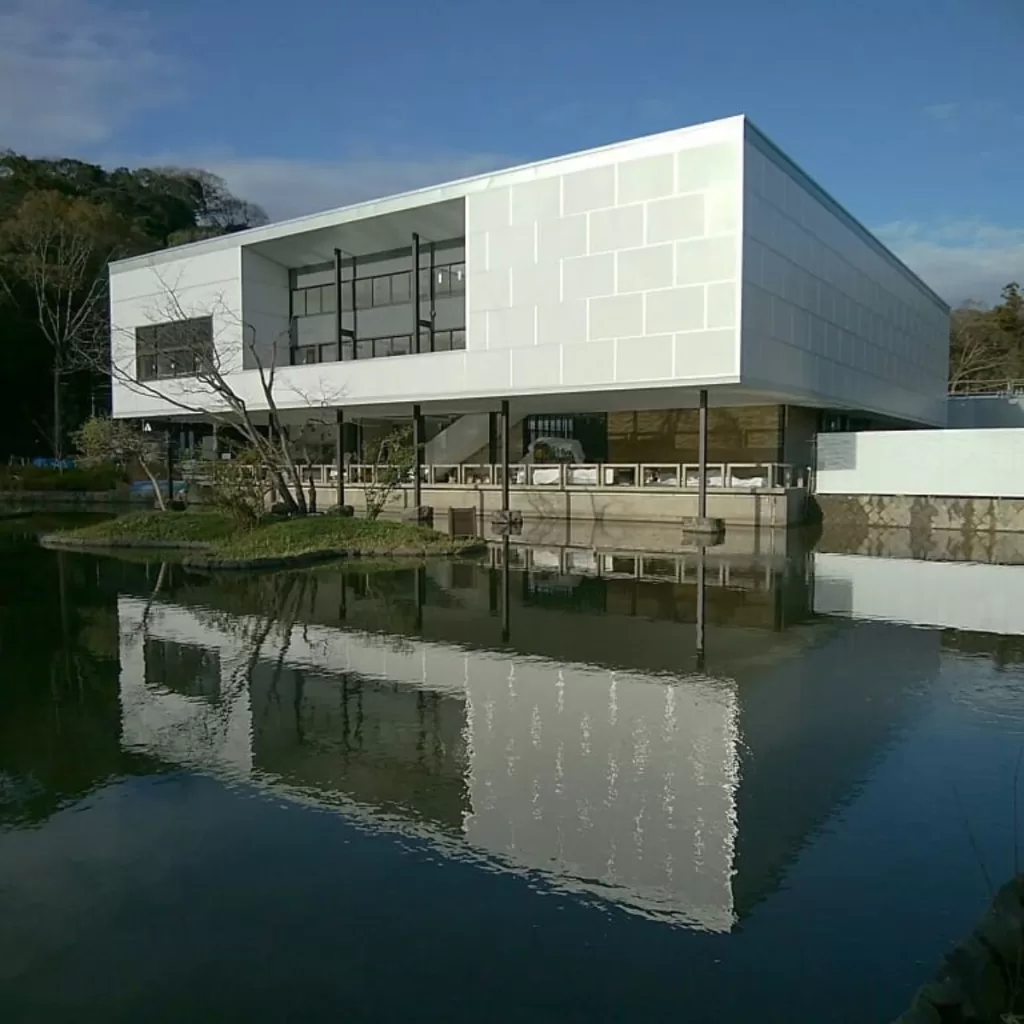
Kamakura Museum is a treasure trove of historical artifacts and cultural heritage, offering a comprehensive look into the rich history of Kamakura. Located in the heart of the city, the museum provides an immersive experience, showcasing a wide range of exhibits, valuable artworks, and archaeological discoveries.
One of the key highlights of Kamakura Museum is its collection of Kamakura period artifacts. The museum houses a significant number of pieces from the 12th to 14th centuries, including sculptures, paintings, ceramics, and calligraphy. These artifacts offer insights into the art and culture of the Kamakura period, allowing visitors to have a deeper understanding of the city’s history.
Additionally, the museum features rotating exhibitions that focus on different aspects of Kamakura’s heritage. These temporary exhibits offer a diverse range of topics, including local history, traditional crafts, and archaeological findings. Visitors can further explore the depth of Kamakura’s cultural heritage through these fascinating displays, gaining a deeper appreciation for the city’s past.
Gempei Pond
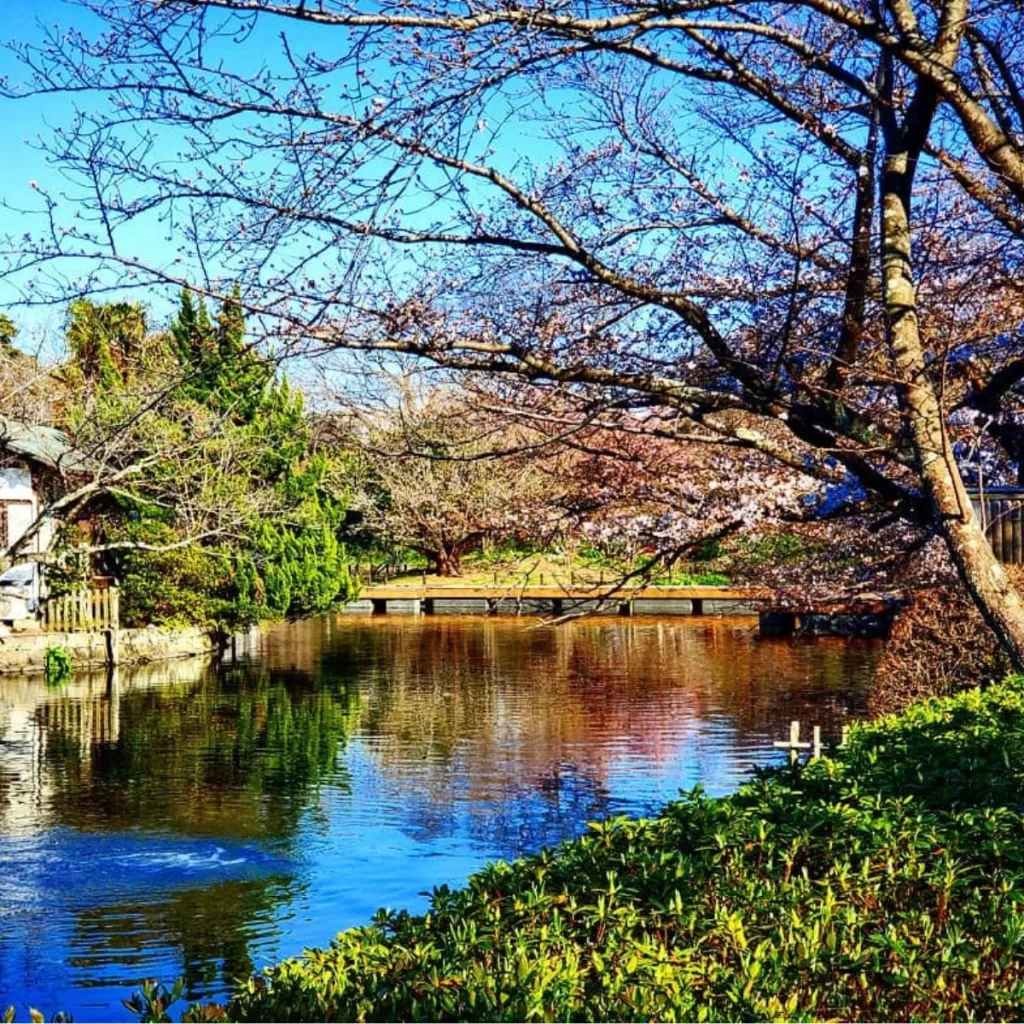
Gempei Pond is a serene and picturesque attraction in Kamakura, known for its natural beauty and historical significance. This peaceful pond is surrounded by lush greenery and is believed to have played a role in the historical Gempei War during the late 12th century.
The tranquil waters of the pond reflect the surrounding trees, creating a stunning mirror-like effect. Visitors can walk around the pond, enjoying the peaceful atmosphere and picturesque views. It’s a perfect spot for nature lovers and photographers to capture the beauty of Kamakura’s landscape.
Additionally, Gempei Pond is home to various vibrant flora and fauna. Visitors can appreciate the diverse plant life and observe the birds and other wildlife that inhabit the area. The pond’s natural ecosystem adds an element of tranquility and harmony to the overall experience, allowing visitors to connect with nature in the heart of Kamakura.
Komachi Street Market
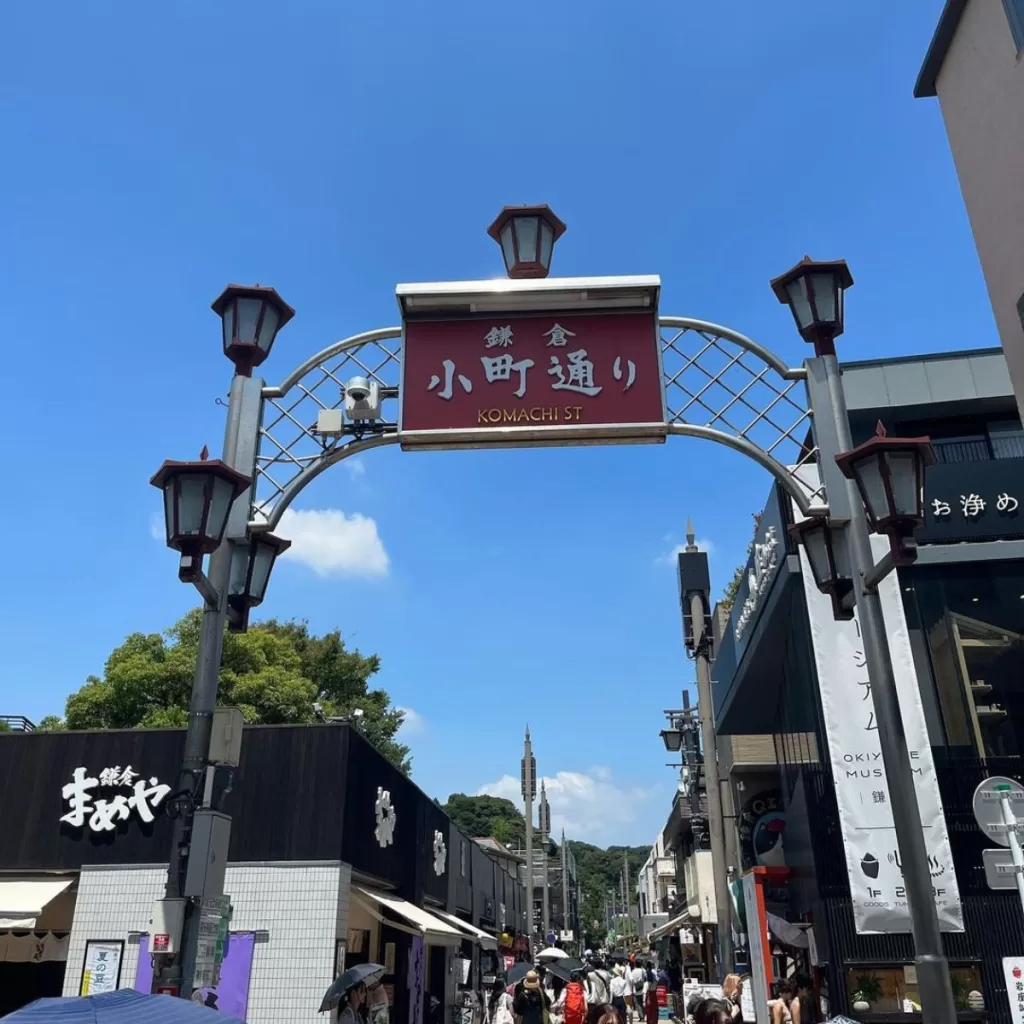
Every Sunday, this pedestrian street comes alive with over 50 stalls selling fresh food, flowers and local crafts. Listen to street performers and mingle with locals enjoying this vibrant weekly market atmosphere.
One of the key highlights of Komachi Street Market on Sundays is the expanded selection of vendors. The street is filled with an even greater variety of stalls, offering everything from local produce to handmade crafts and antiques. Visitors can browse through the colorful displays, discovering unique treasures and supporting local artisans.
Visitors can soak in the lively vibes, enjoying the vibrant energy and bustling activity that defines Komachi Street Market on Sundays.